#Salix fragilis
Explore tagged Tumblr posts
Text
youtube
Willow is such an incredibly useful plant, and in this video we explore the details of willow fencing, basket weaving, and ecological restoration using this glorius species!
COMMON QUESTIONS ANSWERED:
Where is this located?: The Willamette Valley of Western Oregon. Zone 8a. Rainfall ~42" per yr.
What varieties of willow do you recommend?: (From Kara)"In the video you see: Salix alba vitellina, Salix purpurea, Salix daphnoides, and Salix fragilis (various varieties of each). Streambank stabilization is done with native willows (Salix scouleriana and Salix lasiandra in western Oregon). But also, people should look at https://www.willowworld.org/ for specific uses of willows. There really is more to learn than can be communicated in this one video!"
Sorry, we didn't know Willow is considered invasive in Australia!
Featuring Kara Huntermoon - https://karahuntermoon.com/
Basket weaving by AnewDayFolkcraft - https://www.etsy.com/shop/AnewDayFolk...
Instagram:
/ anewday.folkcraft
Willow backpack on thumbnail by Beaver Coppiced Willow -
/ beaver_coppiced_willow
Oregon State University Online Permaculture Design Course:
https://workspace.oregonstate.edu/cou...
Andrew Millison’s links:
https://www.andrewmillison.com/
https://permaculturedesign.oregonstat...
JOIN THIS CHANNEL to get access to uncut video content and live Q & A sessions:
/ @amillison
SIGN UP FOR MY FREE NEWSLETTER:
https://share.hsforms.com/1X79TznHYRC...
#Andrew Millison#solarpunk#willow#willow tree#living fence#basket weaving#ecological restoration#Salix alba vitellina#Salix purpurea#Salix daphnoides#Salix fragilis#Salix scouleriana#Salix lasiandra#Oregon#USA#Kara Huntermoon#Youtube
8 notes
·
View notes
Text

Salix Fragilis Bullata - Carin Bengts , 2020.
Finnish, b. 1946 -
Oil on canvas, 120 x 150 cm.
#Carin Bengts#finnish artist#early spring#garden scenery#crack willow#old cultivar#Salix Fragilis#Bullata#ornamental tree#tree#brittle willow#red wi#red wine#two wine glasses#garden bench
507 notes
·
View notes
Text

Salix fragilis Bullata B&W
Tsyganov Sergey
Original : via
(click for enlarged image!)
6 notes
·
View notes
Text
(click for enlarged image!)
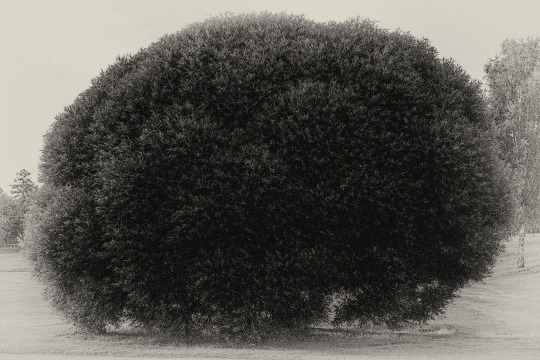
© Niilas Nordenswan Photography – Salava
323 notes
·
View notes
Text
Blushing Bracket #fungus
Daedaleopsis confragosa on Crack Willow, Salix fragilis. Picture taken September 2. #fungi #nature #naturephotography #woods #mushroom #blushingbracket #mushrooms

View On WordPress
0 notes
Text
Willow Bark

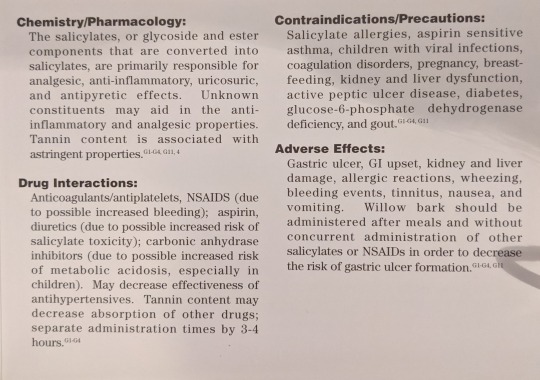
Scientific Names: Salix alba, S. daphnoides, S. fragilis, S. pentandra, S. purpurea, and other Salix species Other Common Names: Basket willow, purple osier, pussywillow, withe, withy Overall Safety: 😐
Therapeutic Efficacy and Considerations:
Lower Back Pain: 😊 Three high-quality trials including comparisons to placebo, conventional treatments, and rofecoxib, have demonstrated significant benefit in reduction of back pain symptoms. A dose of 240 mg salicin/day appeared to be dose-equivalent to 12.5 mg/day of rofecoxib. Time to improvement was usually longer than with conventional therapies, and cost of therapy was less. Dose: extract standardized to contain 60-120 mg of salicin twice daily.
Osteoarthritis: 😐 Evidence from two clinical trials using 240 mg/day salicin had conflicting results. The positive study noted a 14% improvement in the WOMAC index. More research is warranted, but willow bark cannot be recommended for treatment of OA at this time. Dose: extract standardized to contain 120 mg of salicin twice daily.
Note: Numbers of allergic reactions and adverse effects in these trials were comparable to those of placebo/conventional treatments and willow bark may carry the same risk of gastric ulcer as other salicylates. These considerations may mean that willow is not an appropriate choice for many patients.
Chemistry/Pharmacology: The salicylates, or glycoside and ester components that are converted into salicylates, are primarily responsible for analgesic, anti-inflammatory, uricosuric, and antipyretic effects. Unknown constituents may aid in the anti-inflammatory and analgesic properties. Tannin content is associated with astringent properties.
Drug Interactions: Anticoagulants/antiplatelets, NSAIDs (due to possible increased bleeding); aspirin, diuretics (due to possible increased risk of salicylate toxicity); carbonic anhydrase inhibitors (due to possible increased risk of metabolic acidosis, especially in children). May decrease effectiveness of antihypertensives. Tannin content may decrease absorption of other drugs; separate administration times by 3-4 hours.
Contraindications/Precautions: Salicylate allergies, aspirin-sensitive asthma, children with viral infections, coagulation disorders, pregnancy, breastfeeding, kidney and liver dysfunction, active peptic ulcer disease, diabetes, glucose-6-phosphate dehydrogenase deficiency, and gout.
Adverse Effects: Gastric ulcer, GI upset, kidney and liver damage, allergic reactions, wheezing, bleeding events, tinnitus, nausea, and vomiting. Willow bark should be administered after meals and without concurrent administration of other salicylates or NSAIDs in order to decrease the risk of gastric ulcer formation.
#sigler dietary supplement drug cards#2nd edition#willow bark#salix alba#salix daphnoides#salix fragilis#salix pentandra#salix purpurea#basket willow#purple osier#pussywillow#withe#withy#drug facts
0 notes
Text



Plant of the Day
Sunday 16 January 2022
This specimen of Salix × fragilis var. basfordiana (crack willow, Basford willow) is a cultivar that was selected in the 1860’s by basket-maker William Scaling from Nottinghamshire, UK. It is a vigorous tree with brilliant orange-yellow young growths and small buds which grow tightly against the stems. This plant has been grown on a ‘leg’ (short older stem) with the colourful stems being pruned annually.
Jill Raggett
#salix#crackwillow#Basfordwillow#winterstems#wintergarden#winterinterest#deciduous#plants#writtledesign#gardens#horticulture#garden#cambridgebotanicgarden#cambridge#botanicgarden#pruned
52 notes
·
View notes
Text
Blog post #1 - A Walk in the Wild
11/06/2021
Took a short walk along a local water course today. I followed it downstream until the footpath ran out. The water body has been the centre of many recent local environmental improvement schemes, wetland habitat creation, pollution management and river bed modifications, all these works aiming to improve the ecology of the waterway and the surrounding regions.
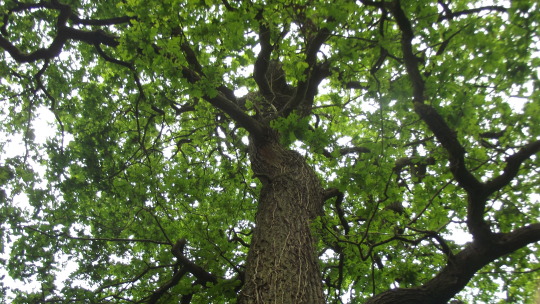
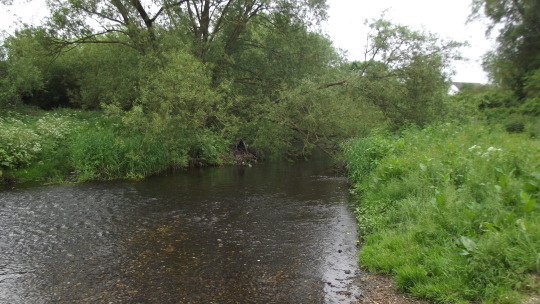


The region is home to a complex plethora of species of flora, too many to list here! A point of interest along the walk was this Crack Willow (Salix fragilis) tree, seeming to have pulled up an area of turf, creating a small undercut in the bank, possible providing shelter to many resident fauna.


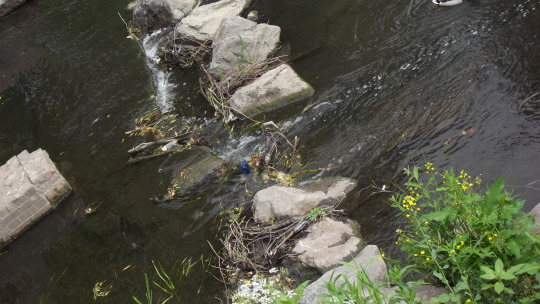
Alot of pollution and debris collected sadly along the water course, though having ran studies of the water quality myself there is no major call for concern, just needs a litter pick!


Many birds spotted along the walk the most abundant being the Mallards ( Anas platyrhynchos). other species of note where Moorhens (Gallinula chloropus), Black-headed gulls (Chroicocephalus ridibundus) and a family of Blue tits (Cyanistes caeruleus), comprised of this years fledglings.
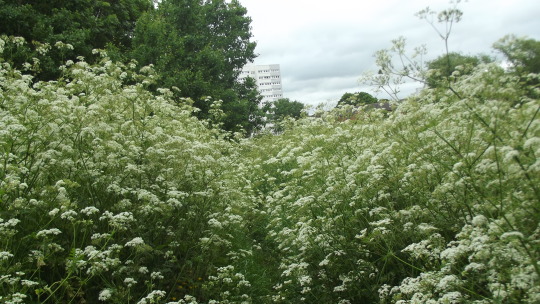
Large areas of dense vegetation have sprung up in the last few weeks along the less travelled parts of the footpath. This region of Cow parsley( Anthriscus sylvestris) was home to a large quantity of nectivorous insects (as well as responsible for turning my black jacket white with pollen!)
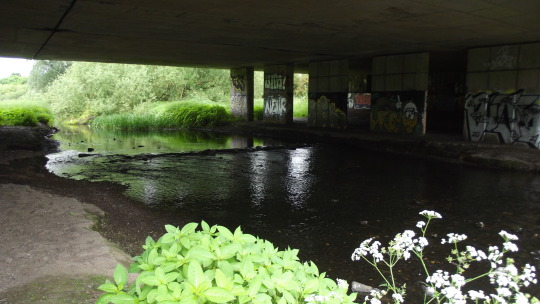
My walk ended with my path being blocked by a fallen tree and a collection of washed up debris by the river, but not before spotting a group of three Wrens (Troglodytes troglodytes) with two Blackbirds (Turdus merula) drinking from along the concreted bank side.


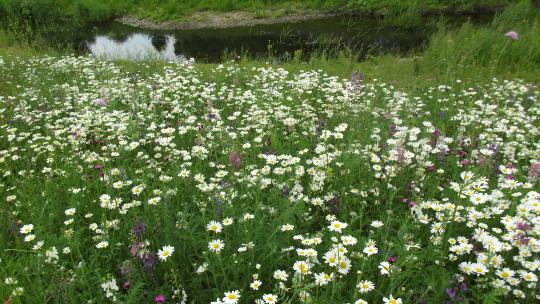
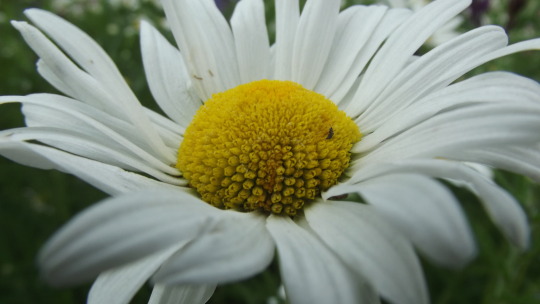
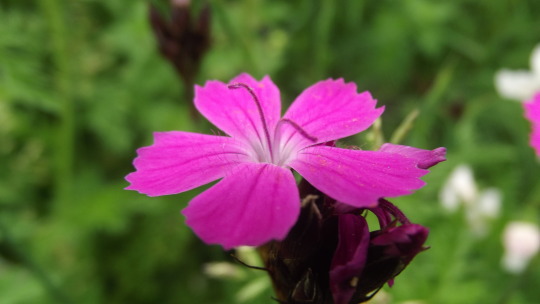


On my return walk, a small deviation along a secondary stream led me to this photogenetic wildflower meadow, no doubt sown by the local volunteer group, filled with native flowers such as Ox-eye daisies (Leucanthemum vulgare) and Red clovers (Trifolium pratense) helping to provide a habitat to bees, butterflies and countless other species, it was a lovely sight to conclude my days journey.
I hope you enjoyed! more posts to come! until next time, I’ll see you in the wildwoods!🌳📸🌳
#ecology#environmental study#environment#thewildwoodsblog#conservationist#naturephotography#nature#riversidewalk#walkinnature#wildlife#urbangreenspaces#natureblog#urbanwildlife
9 notes
·
View notes
Photo

Niilas Nordenswan Salix Fragilis Helsinki, Finland 2019
511 notes
·
View notes
Note
If you’ll answer more than one - 🌱🍃🐑 (if not, take your pick of the three 😊)
🌱 Seedling: What is something you want to begin learning?
Good question 🤔 If begin as in start from the very beginning, i've been dreaming of starting aerial acrobatics (the kind you do with lines and bars in the air you know? We had a single hour try outat school once and i've loved the idea since). If begin as in begin learning more, cooking a variety of good (cheap) vegetarian foods! For now i can do like... vegetable soup and sauces with tomato
🍃 Leaf: What is a plant you find beautiful?
Loads!! Almost all of them tbh. But i think i'll give a shoutout to a tree which I noticed several times when driving yesterday, terijoensalava (Salix fragilis 'Bullata') , a type of decorative willow. The round shape is just wonderful
🐑 Sheep: What is a comfort item you own?
My buneary plushie, a friend whenever i'm staying the night away from home
1 note
·
View note
Text
Plant of the week ~ Salix (Willow)
Plant of the week ~ Salix (Willow)
Botanical art illustrating the separate parts of Salix alba
This week we are taking a look at one of my favourite trees ~ Salix (Willow). Blossoming in spring, willow is a great plant both aesthetically, for human use and as part of a wildlife garden. Let’s take a closer look below.
Cultivation & Care
Salix babylonica is often grown as an ornamental tree in parks
Willow enjoys a sunny position…
View On WordPress
0 notes
Text
When I was a child I loved to play around the “magical” twisted trunk of a huge weeping willow (salix babylonica) in a gully behind the house on Adnamira. It was a little off-putting, however, when I traipsed down the paddock one day with my adventure Barbie dolls, to find a whole nest of baby black snakes all writhing under the roots just where I’d planned to set up camp. Nevertheless, I still have a fondness for weeping willows, from a bit more distance.
Along the river we also have black willows (salix nigra), crack willows (salix fragilis) which sound like nasty addicts but merely break easily, basket willows (salix rubens) and possibly white willows (salix alba). Some of them have been growing in huge clumps for at least fifty years. They were always in the same place and I never saw them spread, because they did not seed.
We planted cuttings from some of them along Mullion Creek and around the springs on Adnamira, as a way of stabilizing the banks.
Weeping willows are still okay, but unfortunately, the non-weeping varieties are now able to seed and spread and potentially choke up the river, driving out the native casuarinas. That’s a problem, because in the winter when willows drop their leaves, they affect the water quality and temperature, again making the environment more hostile for the native fish and other creatures. I’ve seen areas of the Molonglo river upstream from us that grow nothing but willows, although others have been worked on to allow a refuge for native plants.
It’s only in the last five years that we’ve seen hundreds of new willow seedlings shooting up, meaning the invasion had reached us. So I put “invasive willow eradication” on my list of jobs, waiting for the right moment.
The right moment occurred in the form of Fabian, visiting from Germany in February, who was prepared to tackle a variety of tasks I didn’t want to do alone (or some of them, frankly, at all).
We worked out what tools we would need. I didn’t want to spray the foliage because the spray would go in the water, so we experimented with using a drill to make a hole in the bark and them sprayed glyphosate directly into it. Unfortunately, we were using the drill on “backwards” so it was surprisingly hard work, and the drill was heavy. It may also have felt heavy because I was coming down with flu. Also the first spray bottle I tried simply dripped everywhere. So instead I got a nice sharp handaxe and a cheaper (but more effective) spray bottle and sent Fabian out again while I succumbed to the attack of flu.
The poisoning was a slow process, because many of the young trees were growing among the rocks right at the edge, or even in the middle of the river, so Fabian had to wade out around them. Definitely a job for the warmer weather. And the older trees in many cases had been pushed by floods into a tangle of limbs that had to be individually treated.
None of the trees were removed. We’ll just let them rot over time. Any small cut branches were put up high to keep them from taking root.
Things were going well until Fabian came rushing back, covered in European wasp stings. He’d been hanging upside down below a trunk, trying to reach some awkward branches with his axe, so it was hard to get right side up and run away. His face and neck were horribly puffed up, as wasps, unlike bees, can sting over and over.
Full of feelings of revenge, we scouted out the tree by night (when European wasps are less active), using red filters on head torches that supposedly meant they could not see us.
Unfortunately, the site was very awkward, slanting sidewards into the trunk. To get really close to it would require balancing across the fallen branches. Also, as we shone our supposedly “invisible” lights into the hole from a distance, I could see insect eyes staring straight back at me. We beat a hasty retreat with our sprays and bottle of diesel fuel. So did Michael Carter a few nights later when he went and checked out the possibility of pouring soap (a contact poison for them) into the hole. We all had to finally admit it was a job for the professionals.
Most recently I went to check on how the willows were going (dying) and found pretty good results. There’ll be more to do next year, but I hope no more wasps.
MAKING WILLOWS WEEP When I was a child I loved to play around the "magical" twisted trunk of a huge weeping willow (
#european wasp#glyphosate#salix babylonica#salix fragilis#salix nigra#vespula germanica#willow#willow removal
0 notes
Photo

Niilas Nordenswan Photography – Salix fragilis, Helsinki, Finland, 2019
106 notes
·
View notes
Photo

© Niilas Nordenswan Photography – Salava
https://niilasnordenswan.tumblr.com/post/694091621235621888/niilas-nordenswan-photography-salava
and : https://niilasnordenswan.tumblr.com/post/693943114776330241/niilas-nordenswan-photography-salava
144 notes
·
View notes
Photo
Salix fragilis, with the common names crack willow and brittle willow, is native to Europe and Western Asia, usually found growing beside rivers and streams, and in marshes and water meadow channels.
Salix fragilis is a medium-sized to large deciduous tree, which grows rapidly to 10–20 m (33–66 ft) (rarely to 29 m (95 ft)) tall, with a trunk up to 1 m (3.3 ft) diameter, often multi-trunked, and an irregular, often leaning crown. The bark is dark grey-brown, coarsely fissured in older trees. The lanceolate leaves are bright green, 9–15 cm long and 1.5–3 cm wide, with a finely serrated margin; they are very finely hairy at first in spring, but soon become hairless.
The flowers are produced in catkins in early spring, and pollinated by insects. They are dioecious, with male and female catkins on separate trees; the male catkins are 4–6 cm long, the female catkins are also 4–6 cm long, with the individual flowers having either one or two nectaries. In late spring fruit capsules release numerous small cotton-tufted seeds. They are easily distributed by wind and moving water, and germinate immediately after soil contact.
Invasive species
S. fragilis has escaped cultivation to become an invasive species in various parts of the world, including: New Zealand; the upper half of the United States; and South Africa. In New Zealand it is listed on the National Pest Plant Accord, which means it cannot be sold or distributed. It can replace a habitat's native plant species diversity by forming monospecific stands. As only the male plant is present in New Zealand no fruit are formed unless hybridised. Species spread is facilitated by stem fragmentation which are carried via waterways. Control and management for habitat restoration projects often uses herbicides.

© Niilas Nordenswan Photography – Salix fragilis, Helsinki, Finland, 2019.
www.instagram.com/niilaskustaaeinari
2K notes
·
View notes
Photo

Crack willow (Salix fragilis)
2 notes
·
View notes